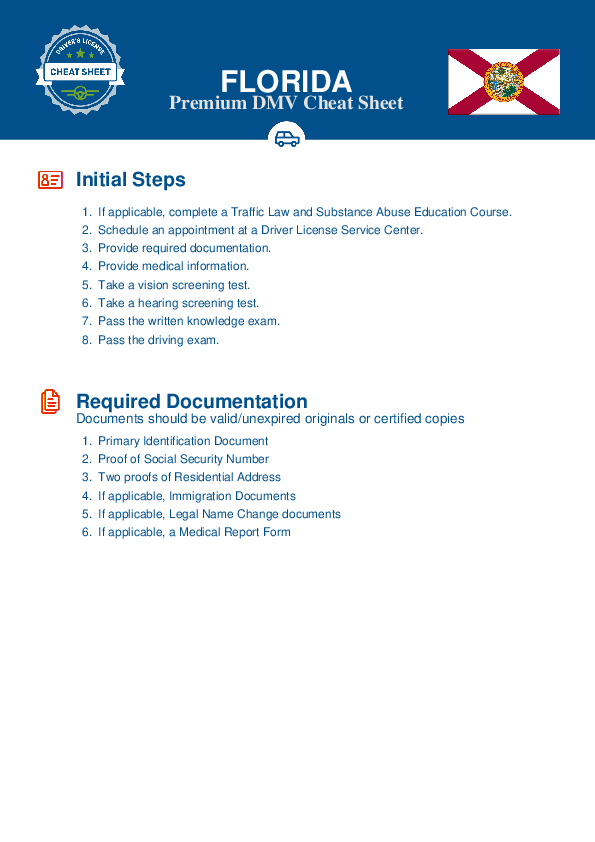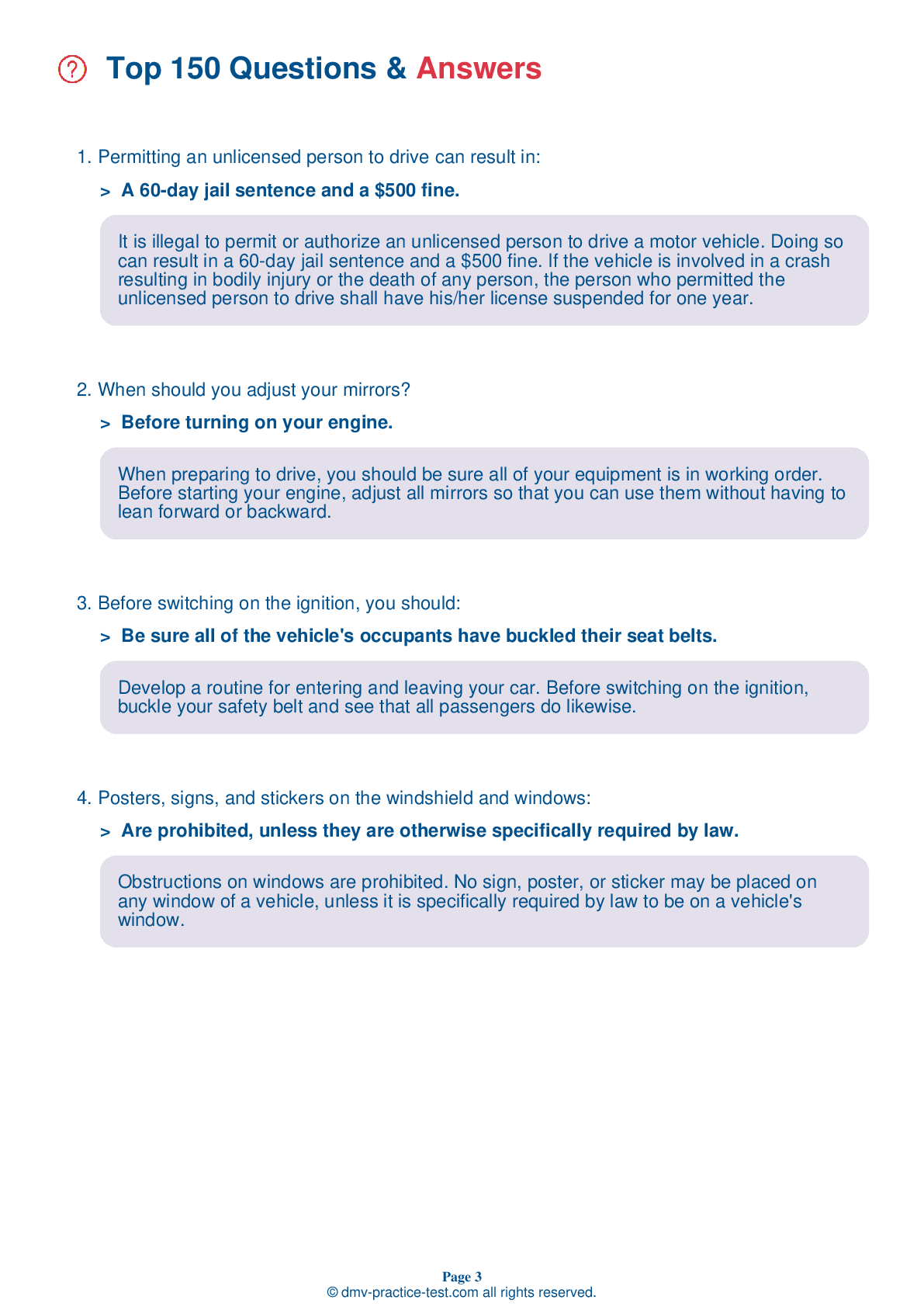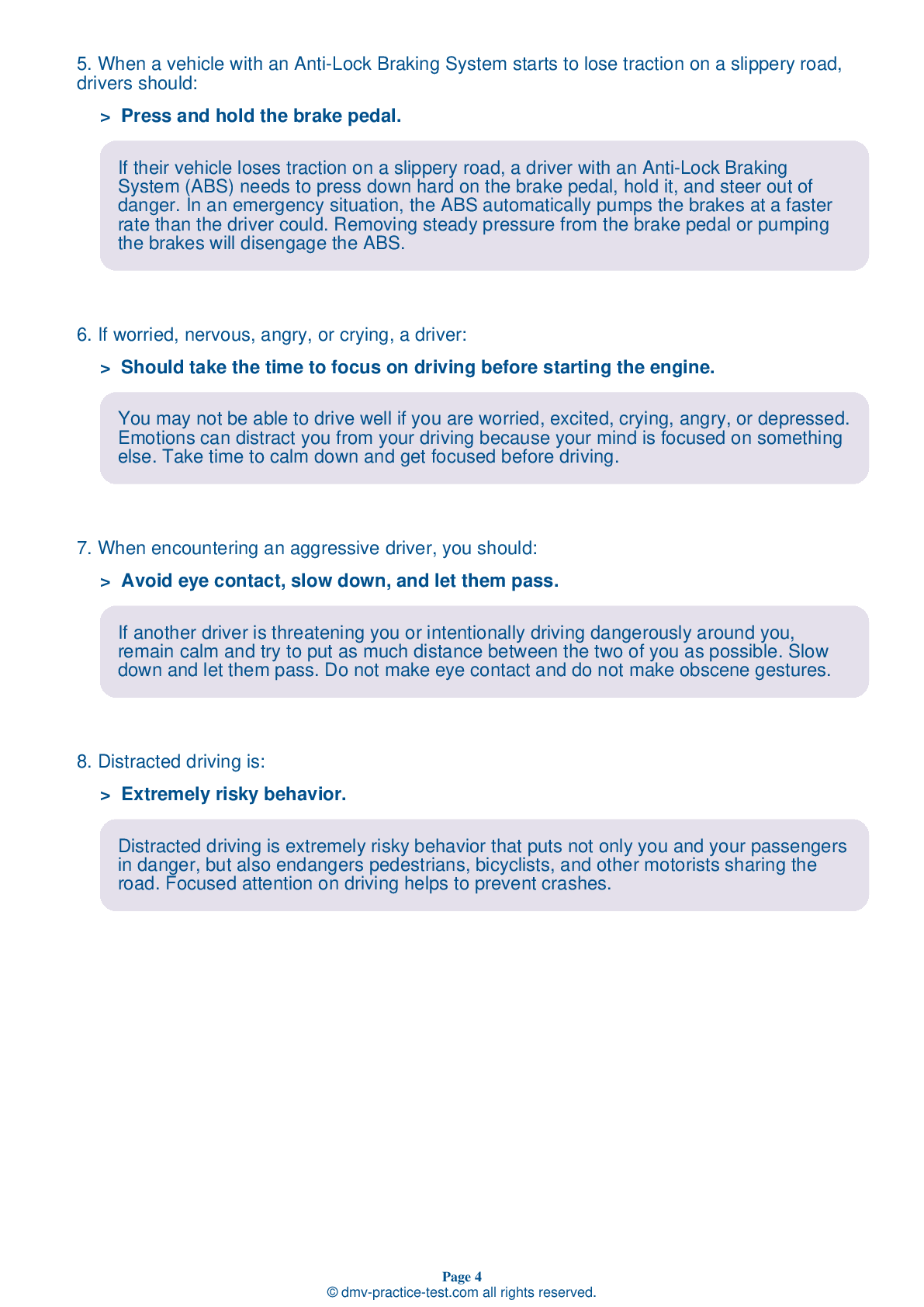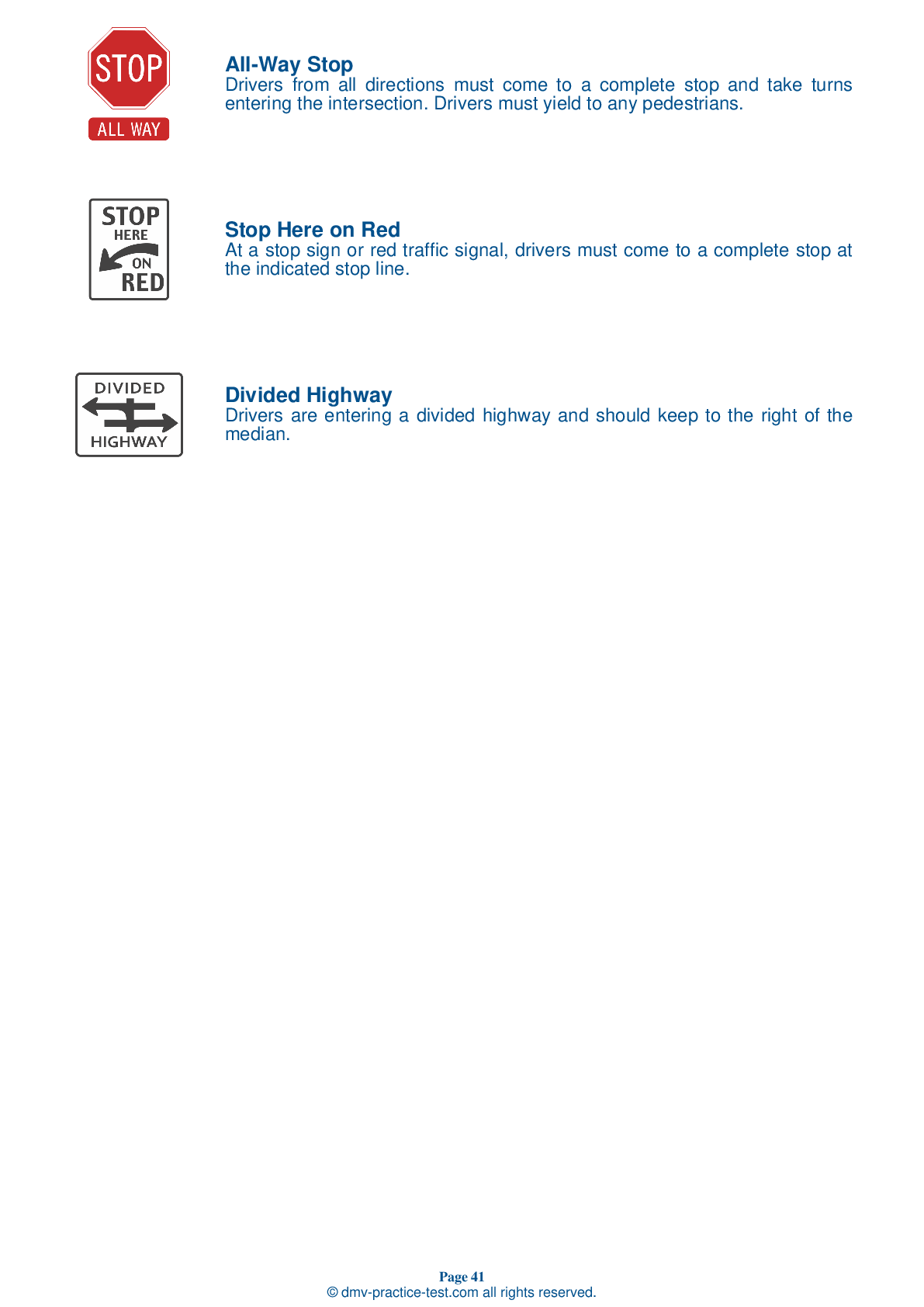FREE Florida DMV Practice Test #14
This set of DMV practise tests for the Florida has been updated for January 2025. It includes questions based on the most important traffic signs and laws for 2025 from the Florida Driver Handbook. To study for the DMV driving permit test and driver's licence exam, use actual questions that are very similar (often identical!) to the DMV driving permit test and driver's licence exam.
Each question on the practise exam has a tip and explanation to help you recall the ideas. Questions about traffic rules, traffic signs, and driving statutes, as well as information from the Driver Handbook, will be included in the written portion of the official DMV test.
You must properly answer 40 of the 50 questions to receive the required passing mark. To help you prepare for your Florida instruction permit or driver's licence, take our DMV practise test.
The DMV exam is offered in a variety of languages.
Using any kind of testing assistance will result in an automatic fail, and the DMV may take additional action against your driver's licence, so stay away from it.
1 . While driving, you come upon a sign displaying the words “Reduced speed, 35 mph." This means:
"Reduced speed" signs inform drivers that they must reduce their speeds. If a new speed limit is posted on one of these signs, the new speed limit begins at the sign.
2 . You are making a left turn from a two-way street onto a one-way street. When you have completed the turn, your car should be:
If you are turning left from a two-way street onto a one-way street, you should complete the turn into the lane closest to the lane you have just left.
3 . When changing lanes on a highway, you should:
Any time you want to change lanes, you should properly signal your intentions well in advance, check your mirrors, and check your blind spot. You can check your blind spot by glancing over your shoulder in the direction that you plan to move.
4 . You come to an intersection that is blocked by other traffic. You should:
You cannot enter an intersection if traffic is backed up on the other side and you cannot get completely through the intersection. Wait until traffic ahead clears so you do not block the intersection.
5 . This sign means:
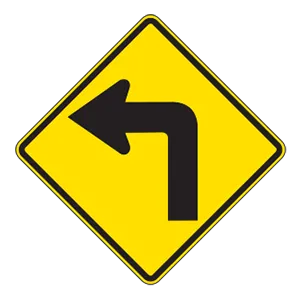
Warning signs prepare drivers for upcoming road conditions and hazards and are usually yellow with black markings. This sign warns drivers that there is an upcoming sharp turn and that they should lower their speed accordingly.
6 . If two drivers arrive at the same time to a four-way intersection controlled by stop signs:
Yield the right-of-way to the driver on your right at a four-way intersection if you both arrive to the intersection at the same time. You may then proceed when it is safe to do so.
7 . When parallel parking between two cars, you should first:
After finding a parking space, checking traffic, and signaling, you should stop parallel to the vehicle directly ahead of your desired parking space before turning your wheel to park.
See the exact questions that will be on the 2025 Florida DMV exam.
99.2% of people who use the cheat sheet pass the FIRST TIME
LT gives us an insight on how the cheat sheet provided her with all the study questions she needed before taking her test.
Joe initially studied with the handbook and failed his test, he eventually found us online, studied and pass his test the first time around.
